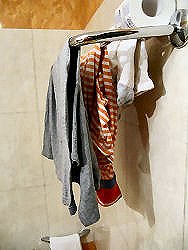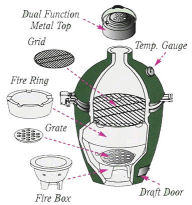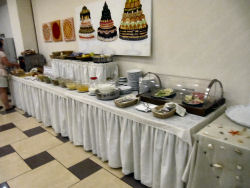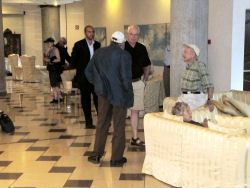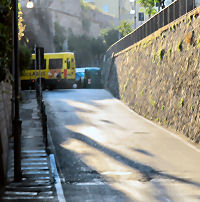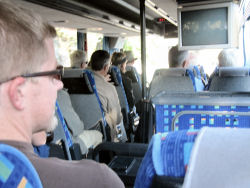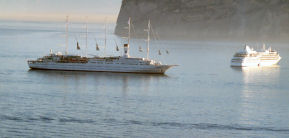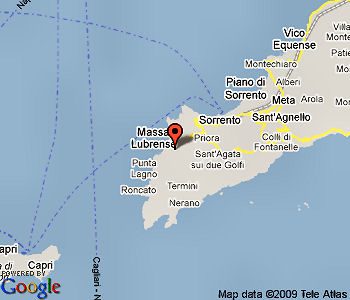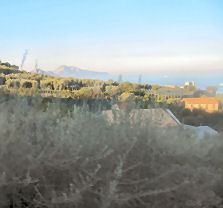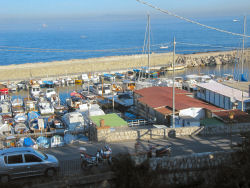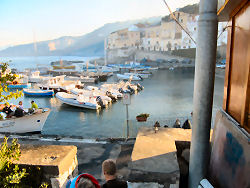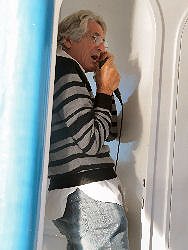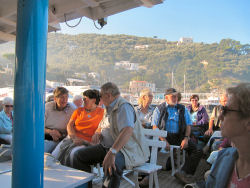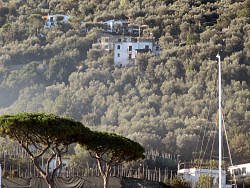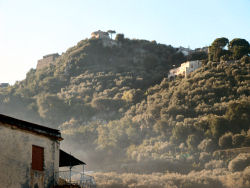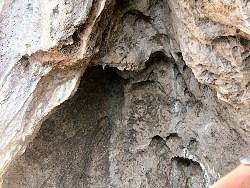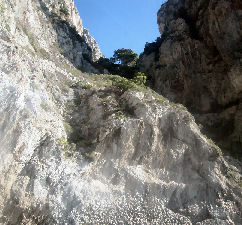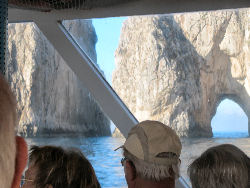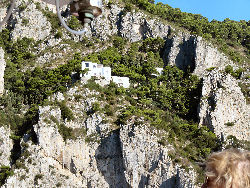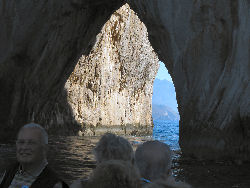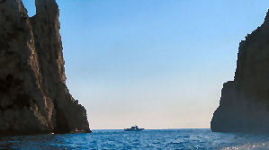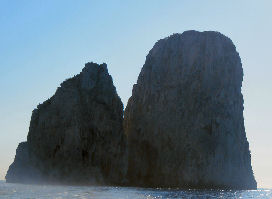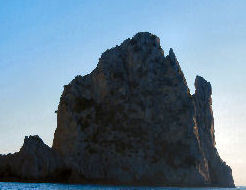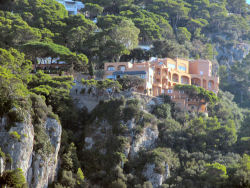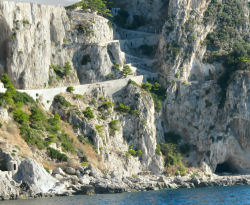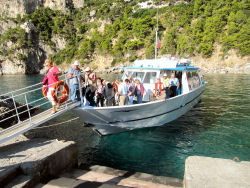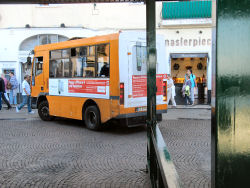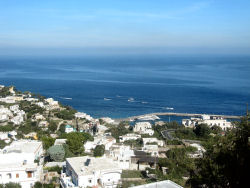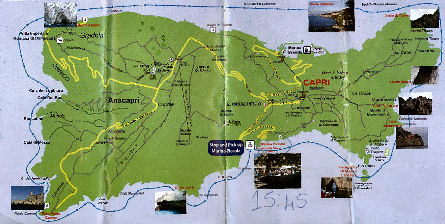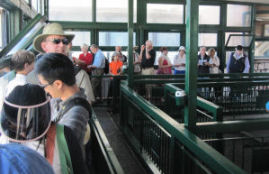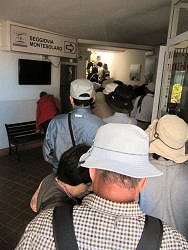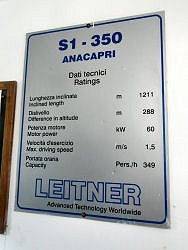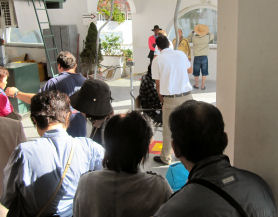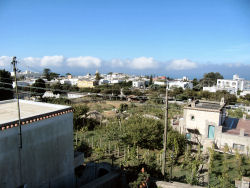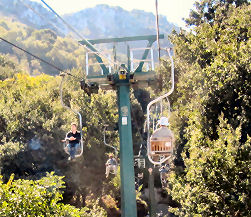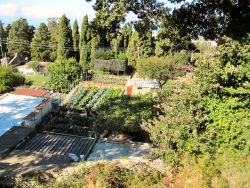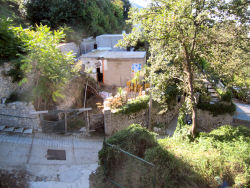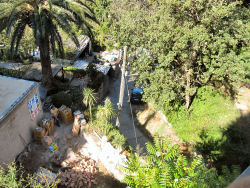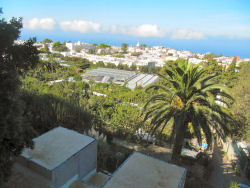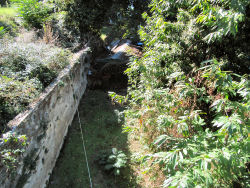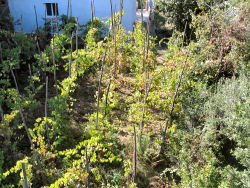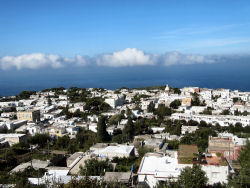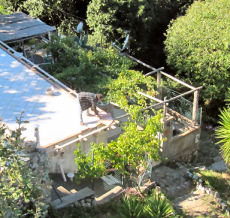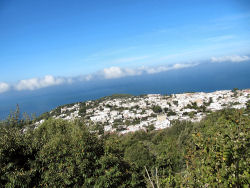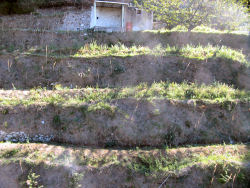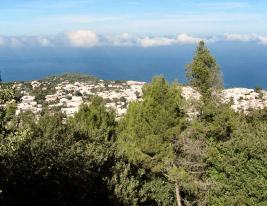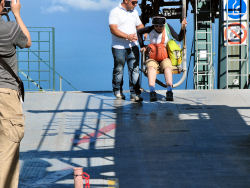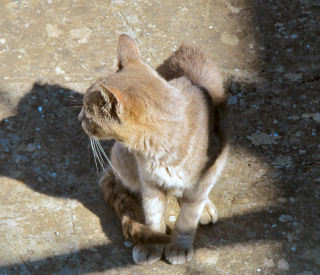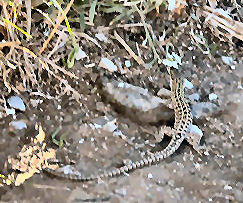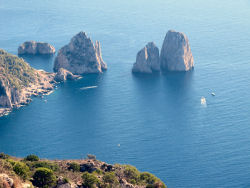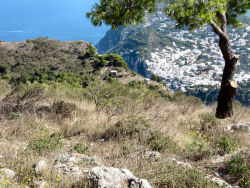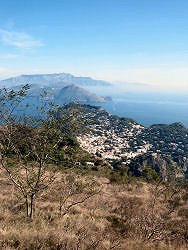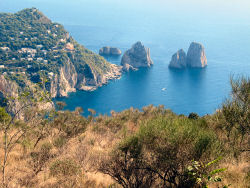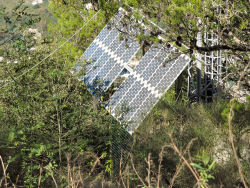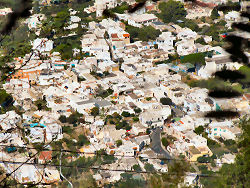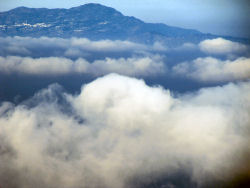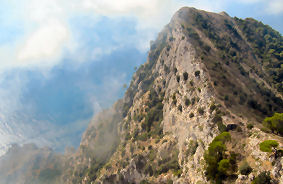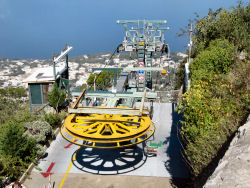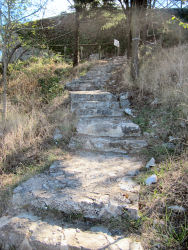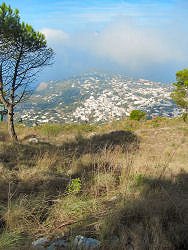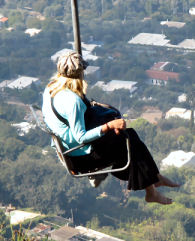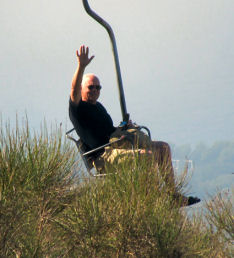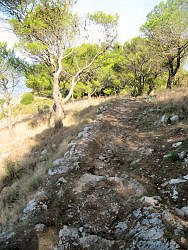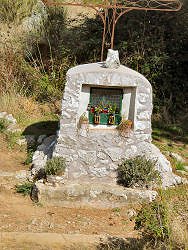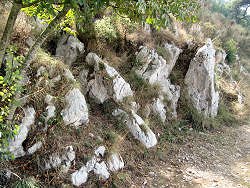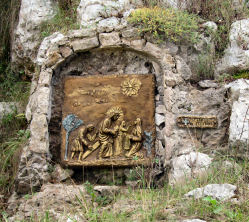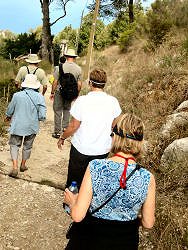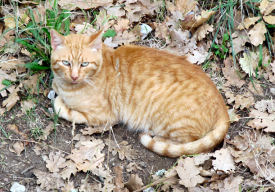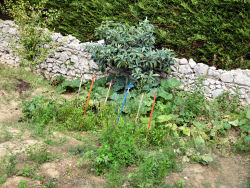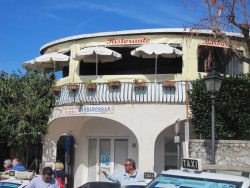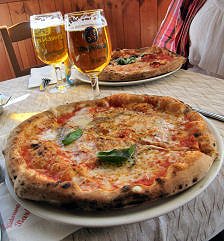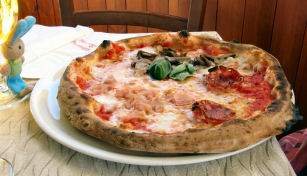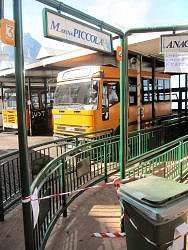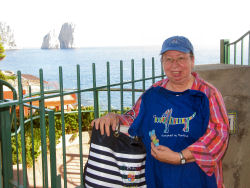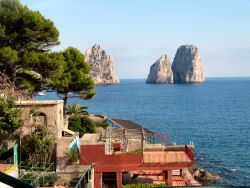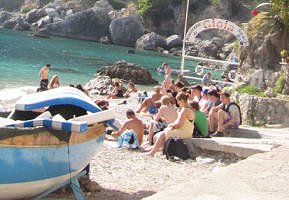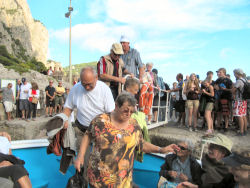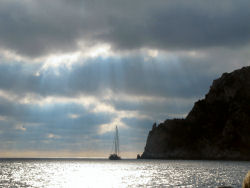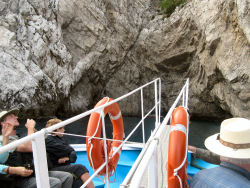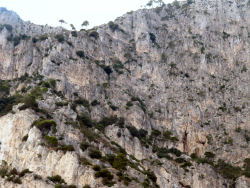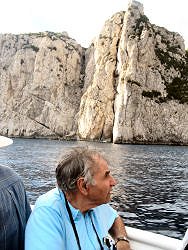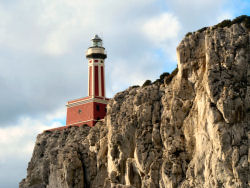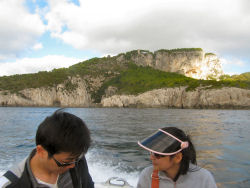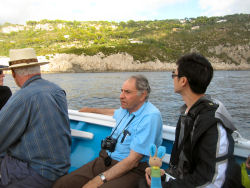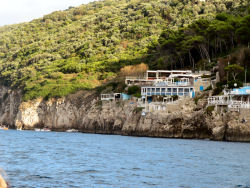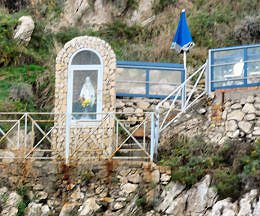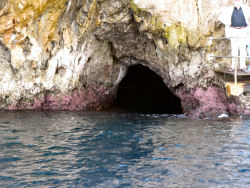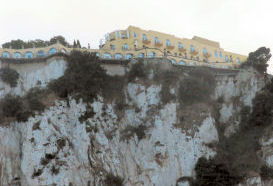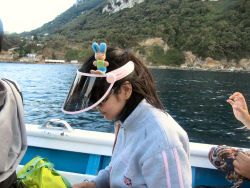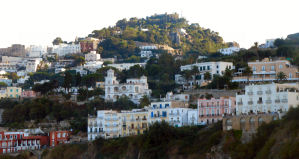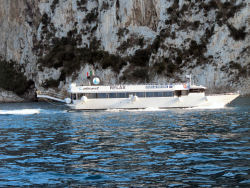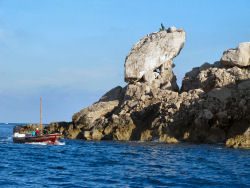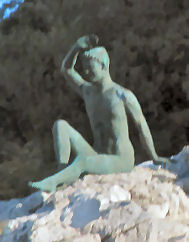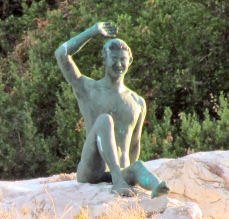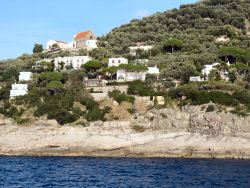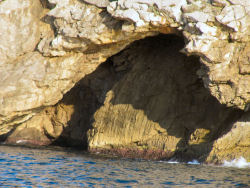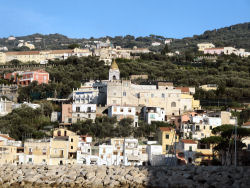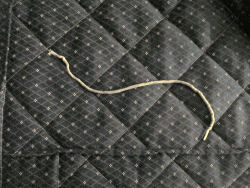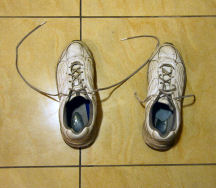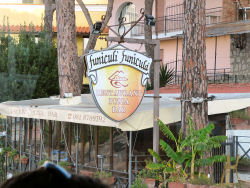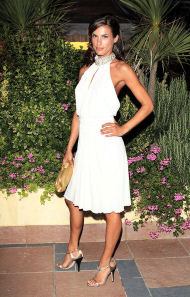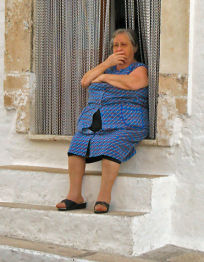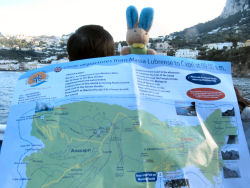I awoke when I heard the phone ring. The phone was, as always, on Sue’s side of the bed, so she answered it. We had left a seven o'clock wake-up call, but it surely did not seem that late.
From the sound of Sue’s voice it seemed obvious to me that it was not a wake-up call. At first she was very tentative with what she said. She did not seem to recognize who was calling. Eventually it became clear to me that Patti was calling us from Connecticut. A look at my watch informed me that it was a few minutes after midnight. Sue stayed on the phone with her for at least a half hour while I drifted in and out of consciousness.
Evidently Patti was out of the hospital and back in her house. However, on Thursday she was scheduled to have brain surgery. Since her tumor was encapsulated, whatever that means, the doctors did not consider this development too serious. In fact, they were not even requiring her to stay overnight![1]We did our best to digest this news, but it was simply too overwhelming. Patti had even invited us to come over to the Corcoran house when we got home on Saturday. Tom wanted to try his hand at cooking porchetta for sandwiches in his Big Green Egg.I somehow got back to sleep, but I awoke again at 5:30, and for once I felt like working on the journal. Maybe I was inspired by Rainer’s little pep talk. After about an hour’s typing, however, I remembered that I needed to do some laundry. I hastily conducted an inventory of my clean underwear, socks, and shirts. I determined that getting through the rest of the vacation required washing of a couple of pairs of underwear, two shirts, and one pair of socks. I washed exactly those items and no more. The shelf in the bathroom served as a reasonably suitable substitute for a clothesline. My clothes probably would not be completely dry when we awoke on the morrow, but I would deal with that then.
Once again the water in the sink that I used for shaving was only lukewarm. In all other respects, this hotel was very nice, but, like most tourists, I really appreciate hot water. Maybe I needed to start bringing something with me to rectify that situation. Perhaps a small blowtorch, or some sort of compact nuclear-powered device would suffice. Suggestions are welcome.
Sue and I ate breakfast with Diann, who seemed to be a really nice person. She asked me if I were a history professor. I had taken a lot of college-level classes, but I never even considered taking a history class. As an undergraduate I was too busy with other things to sign up for something that necessitated as much studying as history. In graduate school I took what was required. I had little interest in history until thirty years later.For some reason most of the tables in the breakfast room had three chairs and two place settings. So, couples were occasionally induced to split up. I see nothing wrong with this.
The drink that was labeled orange juice at breakfast was green and bitter. They also had something called “ace” that looked like orange juice, but my courage was insufficient to try it.
At 8:30 nearly all of the tour group assembled to take advantage of the hostel’s excursion to Capri. We were joined by a few other people who were staying in the hostel. For €35 it seemed like an awfully good deal. The weather was pleasant enough, but a little overcast. There was quite a bit of haze or smog or something along the waterfront. I overheard several women commenting favorably on the Fabian-like hairstyle employed by the man at the hotel’s desk. I immediately thought of the joke about the Djinni and the bridge to Hawaii, but I was discreet enough not to let it out of the lamp.We hiked up to Via Corso to catch the bus that was scheduled to take us to a marina somewhere on the Sorentine Peninsula where we would presumably board the boat for Capri. That was all that any of us, Rainer included, knew for certain.
On the way up we saw a couple of school buses that were somehow able to negotiate the steep and winding road near the hostel. When we reached Via Corso the group stood in front of an elegant hotel waiting for our bus. At one point a lady who almost certainly had never washed out her clothes in the bidet came out and asked if we were taking the excursion to Ischia. We responded in the negative. She then withdrew inside and never reemerged. The hotel had a parking lot, a rare find in Italy. It was large enough that buses could pull in and turn around. Several times our hopes rose when buses took advantage of this capacity, but it was not until we had been there for about twenty minutes that a bus labeled Persico arrived to take us to the marina. Although Sorrento is a prime tourist attraction, and it lends its name to the Sorrentine Peninsula, very few tourists ever visit the rest of the peninsula. Within a few hundred yards of Sorrento the land became quite heavily wooded and hilly. It took us at least fifteen minutes to reach the town of Massa Lubrense. Along the way we often could clearly see our destination, the island of Capri. The Marina della Lobra seemed to be quite nice.We marched down to our boat, and, once again, we found that it was already more than half full of tourists. This time it was a German (or maybe Austrian) group, and they had occupied nearly all of the seats in the aft section, which was covered. There was not a lot of room remaining in the foreward section, and by the time that Sue and I boarded the vessel, the only seats that we could locate were along the railing back in the German colony. A man had situated himself in a small alcove in the rear section, presumably to help maintain his balance as the boat skimmed across the waves. He addressed those seated in the back in German using a microphone and the boat’s PA system. He certainly did not look the part. He had fairly long grey hair and was wearing blue jeans and a dress shirt with a sweater. His shirttails were dangling. Everyone in Italy seemed to cultivate a look, and I guess that that was his.He kept up a steady stream of commentary, and he evidently could tell that this was annoying to those of us who did not understand German. A couple of times he addressed us in English, and told us that he would be happy to provide commentary in English, but he needed to be paid. The truth was that he probably would have been just as annoying in English.
However, his monologue was not the most irritating thing about the three-mile trip out to Capri. It was extremely difficult to take photos because so many of the Germans were standing up and walking around with their cameras. Another problem was that we sat on the wrong side of the boat. Although the map that the man on the boat provided us clearly indicated that the vessel went around the island counterclockwise, in fact, the island was always on our right as we sailed in a clockwise circuit. Since we were on the port railing, I had to try to photograph beneath the canopy and through a gauntlet of elbows and other Teutonic obstacles. Nevertheless, the views in the morning light were spectacular, both looking ahead to Capri and back toward the Sorrentine Peninsula and the Bay of Naples. Along the way we got a good look at the natural geological formations that characterize Capri’s rugged coast. We saw Tiberius’s leap, the White Grotto, Masullo’s Grotto, and the one-hundred-meter-high Faraglioni rocks on the island’s southwest corner. Our boat actually passed through a tunnel in one of the Faraglioni.[2] These were all rather interesting, but the caves that we had seen on the Gargano Peninsula had been at least as dramatic.We arrived at Marina Piccola, and it was definitely well named. We had to exit from the boat via a rather precarious ramp onto the dock. They made it quite clear that we had to be back at the marina promptly at 3:45.
Near the marina were several eating establishments and a small beach that was extremely rocky. No one was using the beach yet. It was not even eleven o'clock. From the beach it was necessary to climb a stairway up to the road. At the top of the stairs was a bus stop for the only public transportation on the islands. Private buses came there as well, and the Germans all piled onto one of them. Thank goodness that they did. Who knows how many of the public buses we would have needed to transport everyone on the boat?
Here is how the bus system works on Capri. Buses go from one station to the next; there are no stops in between. One bus goes from Marina Piccola to Capri Town. From Capri Town you can go to Marina Grande or Anacapri. The cost is €1.60 per leg, and you must get off of the bus that you are on and board a bus for the next leg. There are no transfers. This much I remembered from 2003. The other thing that I remembered was that there were not many seats on the buses. For the many tourists bound for Capri Town, Marina Piccola is just as convenient as Marina Grande. However, if, like us, you plan to go to Anacapri, it is twice as difficult. We all got in line for the bus to Capri Town. The bus stations in Capri were well suited for waiting. They were covered with a sturdy canopy, and steel fences herded the prospective riders toward the spot where the bus would eventually park. If more than one destination was available, there were separate stalls for each bus. The fenced area was substantial. The designers obviously expected throngs of unruly tourists and erected them in an attempt to maintain order. We were quite close to the front of the line, but I still knew that it would be questionable as to whether we would get seats. I did not mind standing too much, but Sue’s knees were already hurting from having to climb the staircase. We waited for about fifteen minutes, and then the bus appeared.The driver emptied the bus of his passengers and then allowed us to board. Because there was no ticket booth in Marina Piccola, everyone paid the driver. The going was slow but steady. It was a near thing, but Sue did get to claim one of the eight precious seats on the bus.
The official capacity of every bus on Capri was “however many wanted to board.” There were so few seats that every bus had standing passengers. People continued to press aboard until the person next in line to board decided that enough was enough. The bus driver then shrugged and forced the door to close. We arrived in Capri Town just as a bus for Anacapri departed from the station. This was good news and bad. We would have to wait for the next bus, but we might get a seat. Sue and I therefore rushed to buy tickets at the ticket booth. The station there had three stalls with three steel fences for herding the passengers onto the correct bus. The herding fences had been freshly painted a bright green. It was tempting to touch them, but we refrained. Everyone from our tour group got in the line behind us, but other people tended to mill around distractedly near the front of the line, and when the bus came after ten or fifteen minutes several tried to squeeze aboard, but they were shamed to the rear of the line. As it turned out, everyone got on the bus, and it was a little less crowded than the first one. I stood near Steve, who struck up a conversation with some people from Vermont. When the bus arrived in Piazza Vittoria in Anacapri, Sue and I split up. She set out to hunt down the miniature store and other places that she recalled from our visit in 2003. I took a minute to orient myself and look overhead for the wires of the chairlift, but Ching was actually the first to figure out the location of the seggiovia. While she confabulated with some of the other tour group members; I immediately headed for the ticket booth.If I had been there five minutes earlier, I probably could have just bought a ticket and taken a chair to the summit. However, a large group of Japanese tourists beat me to the bottom of the chairlift by a minute or two, and I was forced to stand in a long line. Since I planned to walk back down from Mt. Solaro, I bought a one-way ticket that cost €7.50, which, if memory served, was more than double what it cost eight years earlier.
Now, I was born and raised in Kansas, which is not the chairlift capital of the world. In fact, I had never even seen one before our visit to Capri in 2003. I was by myself then, and I found it scary. Not scary enough to soil myself, but plenty exhilarating. On my third[3] ride on one of these contraptions I mustered enough aplomb to take plenty of photos of the spectacular views. The sun was on my left, so the best ones were of Anacapri and the water, which were on my right. I am very proud to report that I dropped neither my camera nor my backpack. The chairlift line passed right over a couple of people working on their houses or gardens. They paid no attention to us.I was surprised to see that people were already using the chairlift to descend the mountain as we went up. At first I thought that those people must have arrived on the island at the break of dawn. Then I realized that they could have stayed overnight. I have always thought of Capri as a day trip, but TripAdvisor listed forty-four hotels on the island.
The summit of Mt. Solaro was nice, but it was not nearly as wondrous as it had seemed in 2003. It was October this time, and nothing was in blossom. In May of 2003 the trees and bushes were awash in colors of every hue. Additionally, in 2003 no one else from our tour group had decided to go up to the top of the mountain. I felt as if I had stumbled upon the secret pearl in the world’s first oyster. On the other hand, the views of the island were at least as good as before, and I took far more and much better pictures than those that my disposable camera generated eight years earlier. It was not, however, as magical. I suppose that you can never go home again. Or at least, if you try to, you need to pick the same season. One aspect that was definitely better this time around was the weather. In 2003 I watched with alarm from the top of Mt. Solaro as fierce-looking black clouds amassed over the Bay of Naples. The storm overtook us on the Hydrofoil on the return trip to Sorrento. We then had to stand in the rain in Sorrento waiting for the bus up from Marina Piccola, and it was not pleasant. This time, however, the sun shone brightly for most of the day, but it was cool enough that no one, not even Sue, was complaining about the heat.
I walked all the way around the top of the mountain and took photos. After using the men’s room I seated myself on a nearby bench. I jotted down some notes in my spiral binder about the day’s experiences up to that point. I also did some people-watching. I soon discovered that a rather high percentage of our tour group had followed me on the the chairlift, and most of them eventually found the facilities. I got up the nerve to ask Mark about the remark that Jeff had made about him wearing white shirts every day. He explained that he was a funeral director. I never would have guessed.
I had agreed to meet Sue in Piazza Vittoria at 1:00 for lunch. At about 12:15 I started my hike down the trail that led to Anacapri. At about the same time I noticed that the Neithercutts and the Horenkamps were taking the chairlift back down. I think that I got some pretty good shots of them.
On my hike down the mountain I encountered no ladies in high heels and no wild goats on the trail as I had in 2003. I was, however, able to recognize the spot where I had come upon the goats, and I took a photo of it. A little later I came upon quite a few familiar faces that belonged to Ching, Wilson, Jeff, Robbie, Ed B., Diann, Steve, and Edie. I tagged along for a while, but I left them behind when I began to grow concerned that I might not make my appointment with Sue on time.
The bottom part of the path went through a residential area. I remembered that in 2003 I had taken a road where I should have continued on the path. This time I did not make that mistake; I stayed on the path even when it began descending staircases. I also recalled that when I finally reached the main road in 2003 I had turned to the right, and that had been a mistake. This time I turned to the left, and that also turned out to be a mistake; the path must have passed under the chairlift line without me even realizing it. I ended up walking a good distance out of my way, and, after I had realized the error of my ways and doubled back, I had to hustle to reach the piazza at 12:55. I was just about to take a seat on the curb when Sue appeared. We went upstairs at the Pizzeria Barbarossa to eat some lunch. It was not as crowded as I remembered it. I ordered the Pizza Napoli, which featured anchovies, and a beer. As usual, Sue had the Quatro Stagioni to absorb her beer. While we were eating Sue told me the sad news that the place with the miniature Capri was no longer there. She nevertheless had had a pretty good time nosing around the stores of Anacapri.
I heroically stuffed all of my pizza down my pie-hole, but Sue could not eat all of hers. They put the remainder in a box for her, and she carried it all the way back to the hostel.
After lunch we made a big mistake. There was a bus stop right outside of the restaurant. We could have just joined the line, which was quite reasonable. Instead, Sue thought that there was another stop just down the same road that I had just traversed. I told her that the only bus stop that I saw was quite a way down the road. Even so, we set out in that direction for a few blocks until Sue conceded that she was wrong. We then retraced our steps back to the restaurant. We arrived to see a very long line for the bus to Capri Town. In fact, far more people were queued up than could possibly fit on one bus. So, we waited for the bus. It came and filled, and then we waited for another. When we finally boarded, we were no more comfortable than the proverbial sardines. As miserable as these bus rides were, a strange thing occurred as soon as one exited the bus. The island was so sunny and exuberant that the travails of the transportation immediately diminished in importance.The journey from Capri Town back down to Marina Piccola involved a great deal more of the same waiting. There was red and white tape across the waiting area for Marina Piccola. So, to get in line for the Marina Piccola bus one had to go to the front of the line and squeeze past everyone already there. Only one couple was standing in line when we finished acquiring our tickets, so we knew that we were assured of seats – as long as everyone got in line. Several people in our tour group joined us on the bus.
We arrived at Marina Piccola well before the departure time of 3:45. Sue was hoping to get in a little swimming at the beach, but once we got there she changed her mind. The facilities were not the greatest, and the beach was full of young people. I found a place to sit in the sun and pretended to take notes in my spiral binder. I also took a few photos.The Zieves and a few other people amused themselves by casting pebbles at some nearby debris and getting the stones to stop without going too far. Frank, like Sue, bore a box containing leftover pizza. He tried to give it away, but there were no takers. I expected Sue to agree to combine it with hers, but I misjudged her.
As our departure time neared, the people in our group migrated over to the dock on which young people were fishing and socializing. We were soon joined by a busload of Germans. A few boats came and left. It seemed as if everyone was jockeying for position. It reminded me of the start of Il Palio. My goal was simply to avoid sitting with the Germans on the return trip and especially to be seated out of earshot of their tour guide. I counted on the Germans to gravitate to the back of the boat again. I figured that as long as a few people from the Deluxe Hostel Ulisse were behind Sue and me, we could find seats in the front. However, when the boat actually arrived, it put out its little boarding ramp quite a good distance from where Sue and I had taken our position. The Germans rushed over en masse as if the Sudetenland had suddenly become available again. Still, as we inched toward the ramp, I could sense that a few members of our group were behind us. As we got quite close, I was not too concerned about the Germans, but Mark, who was standing directly behind me, made a clever move to grab the railing of the ramp to cut off their right phalanx. Sue and I did manage to find seats on the front part of the boat, and the ride back to Massa Lubrense was more pleasant than the voyage out to Capri. I am not sure who was relegated to the back.It took the boat quite a while to circumnavigate the island. We passed the Green Grotto, which looked like no more than a small cave. An elevated lighthouse marked the southwest corner of the island. Just before we turned back to the east, the captain directed our attention to some wild goats on the side of the hill. I wondered whether one of them might have been the kid that I had seen eight years earlier.The boat was scheduled to stop at the Blue Grotto, which was just around the bend from the northwest corner of the island, but it was not open. Evidently the seas, which did not seem bad at all, were too high for the little boats to enter the Blue Grotto. So, we pressed on. That was fine with me. I had seen enough caves for one vacation.
The rest of the return trip was blessedly uneventful. Our Persico bus was waiting for us in the parking lot of the Marina della Lobra, and it returned us to Via Corso just above our hotel.
Rainer informed us that he would be over at the English Inn drinking beer and eating fish and chips. If anyone wanted his advice about departure plans or anything else, he would be available. I did something smart. The electricity in our room at the hostel only functioned when the key card was inserted into the appropriate slot beside the door. When we departed for Capri, I had left my computer plugged into the outlet. Although I realized that the outlet would not produce electricity as soon as we removed the key card, I hypothesized that it would at least charge while the maids were cleaning the room. I was right! The machine was nearly fully charged when we returned at a little after five in the evening. I was forced to perform emergency surgery on the shoelace of my right Dr. Scholl’s Walmart sneaker. At one point along its length it had been worn down to only a few threads. Fortunately, I have very skinny feet, and I have needed to double-knot these shoes ever since I bought them. I scrubbed up, sterilized my scissors, and then carefully removed the lace past the worn spot. I then rearranged the lace and was able to insert the new end (which obviously no longer had the little plastic dealy on the end) through a couple of eyes. The result was that my shoes no longer matched perfectly,[4] but their utiility was preserved. I suppose that an Italian would have bought a new pair so to avoid making a “brutta figura.” Or maybe he would have pitched the old ones before they got to this state. At eight p.m. I decided to take a shower. Surely, I reckoned, that hour would be one in which demand for hot water in the hostel would be at its nadir. Indeed, the shower was better than the previous evening’s, but it was still a degree or so below what I would posit as minimally acceptable. In almost every respect the Deluxe Hostel Ulisse was a fine place to stay, but I could never recommend any residential institution that could not provide hot water to every room twenty-four hours a day.At a little after eight Sue indicated that she would like to go out and get a drink. At the time she had just roused herself from a nap. I really did not feel like it, but I said that I would accompany her. My tone of voice may have betrayed my true feelings. We never made it out; instead we feasted on the leftover pizza and broken cookies.
I had suspected it before, but this was the day that I realized that I could never make it as an Italian. The buses on Capri were often very crowded, and they had a system for assuring the universally treasured principle of “first come, first serve” was respected. They had installed a set of iron fences that roughly resembled those used to herd cattle toward the abatoir. You entered at one end and exited near the door of the bus. As I was about to board the bus from Marina Piccola to Capri, a little old lady emerged from nowhere and attempted to push ahead of me and the twenty or so people behind me. She showed me a pass in much the same way as Friday and Gannon used to show their badges in order to gain entry to a suspect’s house.Rainer had advised us on how to handle this precise situation. He recommended making a sweeping gesture of invitation and uttering the magic word, “Prego.” He claimed that 90 percent of the time the offending party would yield rather than risk making a brutta figura when his/her transparently bogus claim had been publicly exposed in a polite manner.
Well, maybe that strategy would work if the twenty people in line were all Italians, but this lady was asserting her claim to a crowd of tourists that were no more Italian than the Visigoths, the Vandals, the Normans, or the Landesknechts. I therefore respectfully rejected Rainer’s sage council and instead insisted, “No. C'e una linea.” I then elbowed past her onto the bus, as did Sue. Sue later told me that the lady had subsequently inserted herself in front of an unsuspecting sucker somewhere behind us in the line.Incidentally, I referred to her as an “old lady,” but she may have been no older than myself. I had noticed on previous trips that something seemed to happen to Italian women when they reached a certain age. They suddenly lost a foot or more in stature and their features were changed into something that bore no resemblance to those of the stunning beauties who could be seen everywhere on the street.
[1] She actually stayed two nights, and the people in charge wanted her to stay longer.

